 Internet Marketing
Internet Marketing
Introduction
Even if you are not currently selling directly on the internet, you need to be aware of competition and trends, and you need to develop an internet marketing strategy.
U.S. retail e-commerce sales have been growing about 15% per year and are expected to have a compounded annual growth over the next few years at 14%. Brick and mortar sales have been relatively flat and actually on the decline.
In 2012, 92% of retail sales still took place in brick-and-mortar stores. However, by 2020, online sales are forecast to be $500 billion or 20 percent of nonfood retail sales.
For many types of retailers, the percent-to-total sales could be even higher, as e-commerce growth continues to significantly outpace overall retail sales growth. Much of this will be fueled by the accelerating use of mobile platforms for shopping online. Companies that sell products online should consider internet marketing as part of their distribution strategy. In contrast, service companies tend to use the internet for lead generation and post-lead the sales process goes offline to a sales team.
Leveraging Your Internet Marketing — Pros and Cons
In addition to using your website for direct online sales, there are several marketing and distribution strategies you can use to sell products and expand their reach.
- Major online distributors such as eBay, Wayfair and Amazon (with over $100B in sales) have become critical distribution outlets and competition selling on them is fierce. Yes, you have a wider potential reach to your target audience. But, shoppers on Amazon and eBay go for the cheapest price and if you’re not the cheapest for a product or comparable product you’re probably out of luck.
- Lesser known marketplaces, communities and curators such as Etsy, Fancy, Svpply, ahalife are another option and tend to attract people who seek more unique types of product.
- Flash sale sites (also referred to as daily deal sites) such as Rue La La, Groupon, and Gilt are doing over $1B combined sales providing an alternate business model and potential means of expanding your outreach enabling you to distribute products to your target markets quickly and efficiently.
Be aware that affiliating yourself with such distribution partners, may involve adhering to a variety of stringent rules and criteria, including:
- As a vendor you may need to hold inventory and deal with special service requirements (penalties may be involved if you cannot meet certain criteria).
- Volume can be highly variable by day, month or season.
- There may be certain pricing restrictions and competition can be really fierce – even if you have a unique quality product you may still be beaten by someone who carries a similar style or category that is of lesser quality but is less expensive (i.e. “cheap” in many cases tends to win over quality)
- Operationally, you may have to upgrade your inventory systems, as well as your overall data technology and communications systems to meet these platform’s requirements
- And yes, there may be loads of administrative work and forms to fill out.
Online Media and Internet Marketing Channels: The Basics
We are all familiar with traditional offline marketing, which has its own different channels and means of promotion such a print advertising, direct mail, cooperative advertising, radio and television advertising, etc. In the world of online and web-based internet marketing, however, there are many other avenues and forms to consider – some which may be better suited for your business than traditional approaches alone.
Be prepared to invest in your online marketing strategy
Though internet marketing and advertising may appear to be “free,” generally they are not — at least not in practical terms for business. Of course, you can set up a Facebook page and YouTube channel for free. However, if your goal is to have a significant impact on your sales you will also require meaningful and current content, management of your online sites, adequate technology (hardware, software, etc.), professional design, robust web hosting etc., links, etc. Doing online marketing “right” isn’t a “no-brainer” — it requires time, development and investment in order to be effective. If one is naïve and does not understand the fundamentals of online marketing the experience can become a nightmare and a financial failure. However, if you understand the basics of doing business on the internet, obtain the right help when you need it, and can ascertain which means best serve you and your customers, internet marketing will be and indispensable asset to you and your business.
Forms of Internet Marketing

Contrary to some popular beliefs, online marketing isn’t simple or easy—at least if you want it to succeed.
The most common forms of internet marketing include:
- Search Engine Marketing (SEM)
- Search Engine Optimization (SEO)
- Pay-per-click Marketing (PPC)
- Affiliate Marketing
- Email Marketing
- Banner Advertising
- Blogs
- Social Media Marketing
SEM – Search Engine Marketing
SEM is designed to increase your website’s visibility on Google, Bing and other search engines. SEM can include:
- SEO – search engine optimization
- SERM (Search Engine Reputation Management – equivalent to online Public Relations
- PPC Advertising (Pay-Per-Click Advertising – including ads on Google AdWords, Yahoo, Bing and social media sites)
SEM—A Word of Caution
Some people guess that common sense and intuition are all that’s needed in order to maximize your website’s search engine placement, but SEM is not as easy as it seems. To make matters more complex, SEM consultants and web developers are often notorious for charging high fees for huge-sounding projects, when just a bit of effort on the right aspects of your web program can create 90% of the profitable impact. An experienced SEM consultant will ask about and want to learn about your specific business and can often spot the best items to work on in order to make changes that pay off. Often, these are not the most costly items. Listen to what potential vendors ask about your firm or to ascertain whether they are just trying to tout a generic solution. If they don’t ask questions and are not trying to understand your business, your business goals, and your target customer – don’t walk, run. Ask for references and specific comparative outcomes and ROI. This can be the first test of their reliability because many firms will not answer those questions.

The world of SEO as marketed by SEM consultants is often filled with promises and high price tags.
SEO (Search engine optimization) is the methodology of strategies, techniques and tactics used to increase the amount of visitors to a website by obtaining a high-ranking placement in the search results page of a search engine, including Google, Bing and other search engines. SEO is the process of improving the visibility of a website or webpage in the search engines when someone types in a specific keyword or phrase via the search engine’s algorithms. (Note: “algorithmic search” is also referred to as “natural” or “organic” search by which you’re not paying for the keywords to show up in the results. Your search ranking is automatically reflected in the frequency and selection of key search terms in your web content, blog, newsletters, etc.)
Whether you use SEM consultants or natural key word strategies, SEO will help to ensure that your site is accessible and well-placed on a given search engine, improving the chances that potential customers will easily locate you and “click through.” Where a site ranks in a search is essential for directing more traffic toward the site. The higher a website naturally ranks in organic results of a search (i.e. the higher on the search engine results page the site), the greater the chance that that site will be visited by a user.
SEO is not only essential for search page ranking, but it makes a website ‘search engine friendly’ – with the goal of a good position in the search results when people search for words that relate to your website, product or service. Remember that “SEO” relates ONLY to unpaid, ‘organic’ or ‘natural’ search results mainly based on key word placement and frequency. It has nothing to do with paid advertising.
The best position in organic search results is — of course — #1 on the 1st-page. Many businesses have to settle for any 1st-page position, at least as an early goal. You can’t pay the search engines to get a better organic search position – you have to work at it. This is where selection of your target market and linking of your key words to what your market is searching for comes in. Many people miss this point, and end up spending a great deal of time and money with unfavorable search page placement.
Organic SEO position is important because every time someone visits your site after clicking an organic search result, you have received a visitor who’s probably interested in your website. Better yet, the probability that such a visitor will click through and eventually make a purchase is increased dramatically by their initial identification of you in an initial search.
SEO is typically a set of best practices that webmasters and Web content producers follow to help them achieve a better ranking in search engine results and tend to fall under two types of categories — onsite SEO and offsite SEO.
• Onsite SEO involves making sure your website pages, titles, tags (part of the site code) and overall structure are optimized for target keywords. Increasingly relevant content that users want is becoming a critical component in your ranking.
• Offsite SEO is pretty much what it implies. You need to make sure that you have a significant amount of inbound links from highly respected external websites that are directed to your site. It is a significant factor in how search engines rank your web pages.
You need both onsite and offsite SEO to be successful, and the right mix has everything to do with analytics and tracking. Keep in mind that you MUST be using the right keywords or run the risk of spending time and money driving the wrong people to your website.
Many businesses optimize their sites based on the keywords they think people are using, not the keywords people are actually searching for. That is a big mistake. Doing a little upfront research with free tools such as Google’s keyword search (or even more robust marketing software paid solutions like Hubspot or Marketo) will go a long way in helping you in developing effective SEO for your business.
PPC (pay per click) is a method for placing online ads on search engine pages, web pages or social media pages by paying for each click-through, rather than by number of impressions or a flat rate. PPC is used on websites where advertisers pay their host only when their ad is clicked. With search engines, advertisers typically bid on keyword phrases relevant to their target market. Content sites commonly charge a fixed price per click rather than use a bidding system. There are also numerous variations in CPC terms such as CPA or CPL which your vendors need to explain if applicable
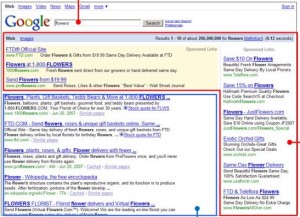
Well-placed ads on major search engines can make effective use of search terms and advertising dollars.
In PPC programs, the online advertisers will pay Internet Publishers the agreed upon PPC rate when an ad is clicked on, regardless if a sale is made or not. The basic measures of PPC accounts are:
- CPC (Cost Per Click – the amount you pay each time someone clicks an ad and is directed to your site). CPC can range from a few cents for specialized, uncompetitive business niches – up to $50 or more for highly competitive industries like financial services.
- Cost Per Conversion (the amount you spend before you get one sale, signup or other goal). If you ‘convert’ one out of ten visitors, and you pay $2.00 for each visitor from Google (i.e.: CPC = $1.00), then your Cost per Conversion will be $20.00.
Usually PPC ads cost nothing to display – when a viewer clicks on the ad, only then is an advertiser is charged for the ad – hence ‘pay-per-click.’
The most popular PPC ads are text ads like you see on Google’s search page. Video and display ads (display ads have a photo or graphic or logo) are also common and can appear on almost any website (although they are generally ‘served’ from an advertising provider like Google).
PPC is a very quick and easy way to promote your website, products and services when getting a 1st-page organic position is a longer-term, more difficult goal. PPC is generally profitable when your business targets a specific segment of the market with a relatively unique product or service or offer – and when there are not a lot of competitors bidding against your ads and driving up the cost of your PPC efforts.
Affiliate Internet Marketing
Affiliate Internet Marketing is the term used to describe a revenue-sharing plan where an online automated marketing program lets webmasters place an advertiser’s banner ads or buttons on their own website. Webmasters will receive a referral fee or commission when a customer has clicked the affiliate link and performs the desired action, such as make a purchase or opt-in for downloads or newsletters on the advertiser’s site. Advertisers invest in affiliate programs for lead generation, and, of course, sales.
Email Internet Marketing
Email Internet Marketing is a type of direct digital marketing that uses email as the marketing communication delivery method. Email internet marketing comes in a variety of forms including:
- Direct email to a selected list of recipients
- Affiliate emails
- Email newsletters and other “opt-in” forms of communication
Email internet marketing is used in a number of ways by organizations and marketers for brand and customer loyalty building, acquiring or converting customers, company advertisements, or for communicating promotional offers and more.
E-mail internet marketing requires you spend time building your list. Sign-ups, contests customer feedback and social media are all ways to build your list. Organizations like Constant Contact are inexpensive resources to mail and clean your list. Also, ensure you are not “spamming” your recipients and that they have a ready mechanism to opt out from your emails if they so desire.
Banner Advertising
If you have spent any time surfing the web, chances are you’ve seen more than your fair share of banner ads and related forms of advertising (pop-ups, etc.) A banner ad is typically rectangular advertisement placed on a Web site above, below, or on the sides of the Web site’s main content and is linked to the advertiser’s own Web site. In the early days of the Internet, banners were ads with text and graphic images. Today, with technologies such as Flash, banners have become much more complex and can be ads with text, animated graphics and sound. Most commerce-related Web sites use banner ads. Think of banner ads as a magazine or newspaper ad but in an interactive, digital format.
 Blogs
Blogs
A blog is a website in which items are posted on a regular basis and displayed in reverse chronological order. The term blog is a shortened form of weblog or web log. Authoring a blog, maintaining a blog, or adding an article to an existing blog is called “blogging”. The term “vlog” refers to a video blog. Why have a blog? Many have a blog to bring a more personal touch as an expression of their brand and to create a dialog with their audience. Some do it for sheer vanity. However, blogging if done well can also be a boon for a site’s SEO. Blogging has become easy and inexpensive, but as with all internet marketing outreach it requires constant tending to keep it fresh and relevant.
Social Media Internet Marketing
Social Media Internet Marketing is a term used to describe a variety of Web-based platforms, applications and technologies that enable people to socially interact with one another online. Some examples of social media sites and applications include Linked In, Facebook, YouTube, Del.icio.us, Twitter, Digg, blogs, and other sites that have content based on user participation and user-generated content (UGC).
The number of social media sites is exploding—be selective in which ones you choose and manage them well.
When creating profiles on these sites, remember to link them up. For example, on your Twitter profile you can include a link to your blog or Web site. On Facebook you can install a Digg application so others can see what you favorite, and a Facebook Twitter application lets your Tweets become your Face book status update. Twitter feeds can be added to your blog, and so on. By linking up your profiles, with one update you can blast your message to multiple social sites.
Success in Social Media Marketing requires that you Be Open, Honest, and a Little Social, too. To successfully market in social media spaces, a business needs to create honest and open profiles that will appeal to consumers and create enough “buzz” to encourage sharing with friends and networks — don’t pretend you are “just another user” on the site. Be honest in letting users know that you represent a business, versus being a single person who always tweets and posts information that links to one business. People will see right through this. Being genuine, impactful, and at times even humorous can be great ways to make Social Media Marketing work for you and your business.
Remember that when you use these social media sites, you are opening your business up to direct dialog and comments from users. One of the biggest mistakes a business can make in such cases is not responding. When comments are left on your blog, a message is posted to your Facebook Fanpage wall or when someone tweets a reply to your status on Twitter, make sure this person gets a message back from you. Show that you have an interest in what they are saying. If you never respond, the user does not have a reason to come back to your profile. Make sure you have staff members who will continue to update these pages with fresh posts and comments to users. Daily updates are best.
One thing to remember is that as a business engaged in social media, you might receive comments and posts that are not positive — comments that you might feel hurt your business reputation. A business has to always be courteous and address the concerns appropriately, no matter how rough the comment you are dealing with is. Social media links can travel fast and wide, causing sometimes unforeseen consequences unless dealt with. This is where Social Media Reputation Management might play an important part in your overall strategy.
Social media also provides a way for you to promote new launches and products. For example, you can twitter company news and announcements (via links), you can add unique and fun demos of our products on video to your YouTube channel, or upload hot product shots to Flickr or your Facebook Fanpage. When an online publication covers your business or products those news stories can also be added to your various online social media profiles.
Concluding Thoughts on Internet Marketing
 I hope that what I have shared with you makes a convincing case that the importance of successful online marketing of your product or service cannot be underestimated. None of the elements of internet marketing work in a vacuum, and you should consider your goals, your budget and what overall strategy and plan-of-action would be best, especially given the stage of development of your business. At the end of the day, online marketing boils down to testing and measuring what you’re doing, tracking the results of campaigns and tweaking the programs. That’s why analytics is so important – with good analytics you can gauge what is going on with your online marketing and adapt accordingly, insuring that you are not wasting time and money, but rather that you are achieving tangible results while knowing why.
I hope that what I have shared with you makes a convincing case that the importance of successful online marketing of your product or service cannot be underestimated. None of the elements of internet marketing work in a vacuum, and you should consider your goals, your budget and what overall strategy and plan-of-action would be best, especially given the stage of development of your business. At the end of the day, online marketing boils down to testing and measuring what you’re doing, tracking the results of campaigns and tweaking the programs. That’s why analytics is so important – with good analytics you can gauge what is going on with your online marketing and adapt accordingly, insuring that you are not wasting time and money, but rather that you are achieving tangible results while knowing why.
Also remember the actual quality, pricing, and differentiation of your product or service itself will determine your ultimate success. While internet traffic can obviously be delivered and retained on the website by effective marketing methods, your product or service, its features and benefits, will still be the crucial factor for making a sale.
Companies need to develop integrated plans with these efforts and continually monitor changes, opportunities, challenge successes and failures. Google Analytics can be a key tool in measuring these factors and the changes. In the end impressions, clicks, conversions and ultimately profitability are the real measures of success.
Glossary – A Few Web Internet Marketing Terms
It helps to know the jargon when you venture into new territory, like internet marketing. To make the most of your online marketing strategies, familiarizing yourself with the terms in this list will help in your conversations and further research:
Above the fold: Content and/or ads that appear on a page before a viewer needs to scroll.
B2B (business to business): Companies and sites that market to other businesses.
B2C (business to consumer): Companies and sites that market to individual customers.
Banner ad: A graphic ad that links to the advertiser’s site.
Call to action: A marketing technique that asks prospects to take a specific action.
Cookie: Identifying code downloaded to recognize repeat visitors or track online activity.
Conversion rate: The percent of site visitors who take a particular action or make a purchase, often called converting browsers to buyers.
CPC (cost per click): Amount actually paid for a click-through to a site from an ad.
CPM (cost per thousand): The advertising cost to reach 1,000 viewers or listeners; allows comparison among various advertising methods.
CTR (click-through rate): The percent of people viewing an ad who click on it.
PPC (pay per click): Payment method for online ads in which advertisers pay for each click-through, rather than by number of impressions or flat rate (see CPM).
ROI (return on investment): The amount of money earned (or lost) as a percent of the amount invested.
SEO (search engine optimization): The process of making a website search-engine-friendly to improve ranking in search results.
SEM (search engine marketing): The combination of SEO with paid search marketing through PPC, paid inclusion, or paid appearance.
SERP (search engine results page): Short for search engine results page, the Web page that a search engine returns with the results of its search
Social media: Two-way communication channels online for networking, sharing news and views, contributing content, and soliciting comments from customers and prospects.
URL (uniform resource locator): Address designating the location of information on the web; includes a registered domain name.
Widget: Small application tool placed on a website to add value.
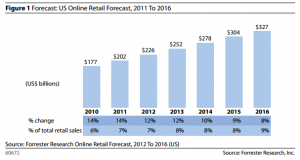
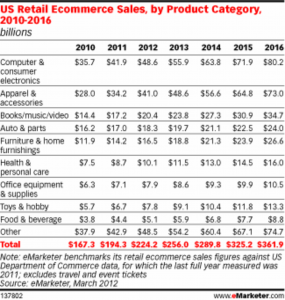

 Guidelines for Website Design
Guidelines for Website Design
 Startup Business Internet Guide
Startup Business Internet Guide
 Here are some of the major issues you need to think about as your online marketing and sales outreach meets your potential customers in the purchase process:
Here are some of the major issues you need to think about as your online marketing and sales outreach meets your potential customers in the purchase process:
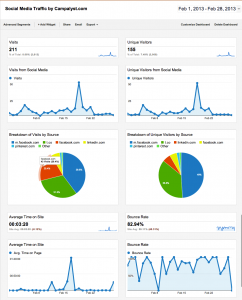

 A few weeks ago, a client and I were discussing how to improve a business presentation because he thought the material was over some of the participants’ head. He insisted on including as much content as possible. He failed to realize that too much information can lead to failure.
A few weeks ago, a client and I were discussing how to improve a business presentation because he thought the material was over some of the participants’ head. He insisted on including as much content as possible. He failed to realize that too much information can lead to failure. Market Research Overview
Market Research Overview


 Branding and Differentiation
Branding and Differentiation
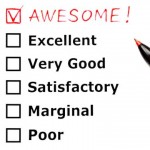
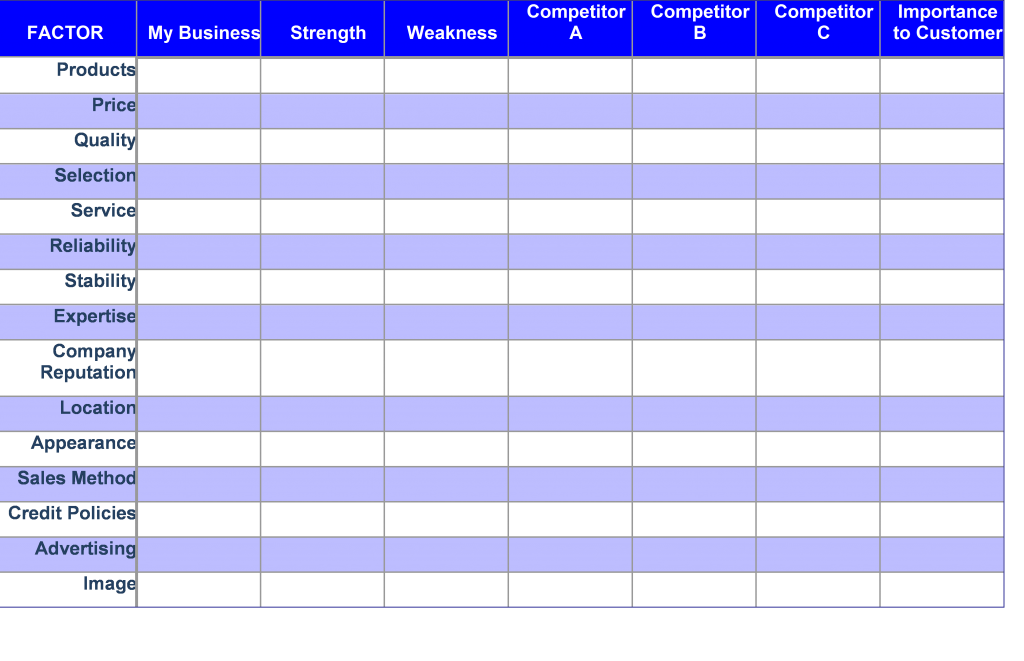
 Assuming there are differences between your products and your competition — and assuming that a significant percentage of your customer demographic cares about such differences — how do you best communicate these differences, especially without big marketing budgets and years of reputation from building your brand? For new entries into the markets for cars, phones, beer, detergent, cakes, milk, etc., it is nearly impossible to communicate meaningful differences to the public. However, there are exceptions, especially when a new market category is created. Two inspirational examples with regards to such marketing and differentiation are bottled water and pizza crusts. Who would believe that someone could market water for a dollar or more when water is essentially free? And who would believe that anyone would buy only the crust of a pizza? The lesson here is that if you are hoping to launch a product into a crowded and existing category, you’ll have to work much harder and smarter to penetrate through the “noise” from the competition. On the other hand, if your product represents a truly new category with virtually no competition (yet!) then your branding and positioning need to focus more on the inherent benefits of the product to your customer. Boboli’s motto says it all…”Only YOU can top Boboli!” Key factors that have proven to attract customers to products include:
Assuming there are differences between your products and your competition — and assuming that a significant percentage of your customer demographic cares about such differences — how do you best communicate these differences, especially without big marketing budgets and years of reputation from building your brand? For new entries into the markets for cars, phones, beer, detergent, cakes, milk, etc., it is nearly impossible to communicate meaningful differences to the public. However, there are exceptions, especially when a new market category is created. Two inspirational examples with regards to such marketing and differentiation are bottled water and pizza crusts. Who would believe that someone could market water for a dollar or more when water is essentially free? And who would believe that anyone would buy only the crust of a pizza? The lesson here is that if you are hoping to launch a product into a crowded and existing category, you’ll have to work much harder and smarter to penetrate through the “noise” from the competition. On the other hand, if your product represents a truly new category with virtually no competition (yet!) then your branding and positioning need to focus more on the inherent benefits of the product to your customer. Boboli’s motto says it all…”Only YOU can top Boboli!” Key factors that have proven to attract customers to products include: